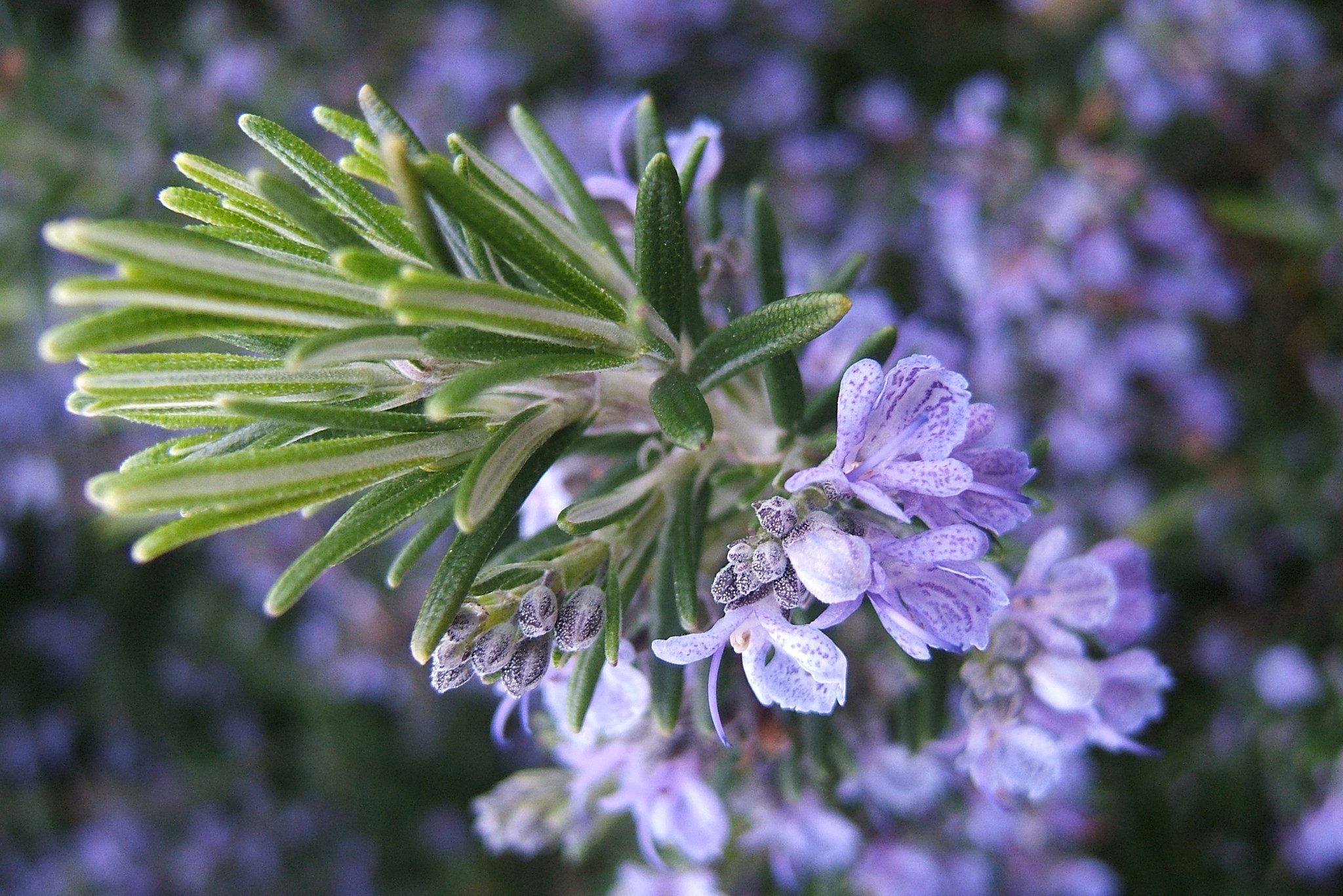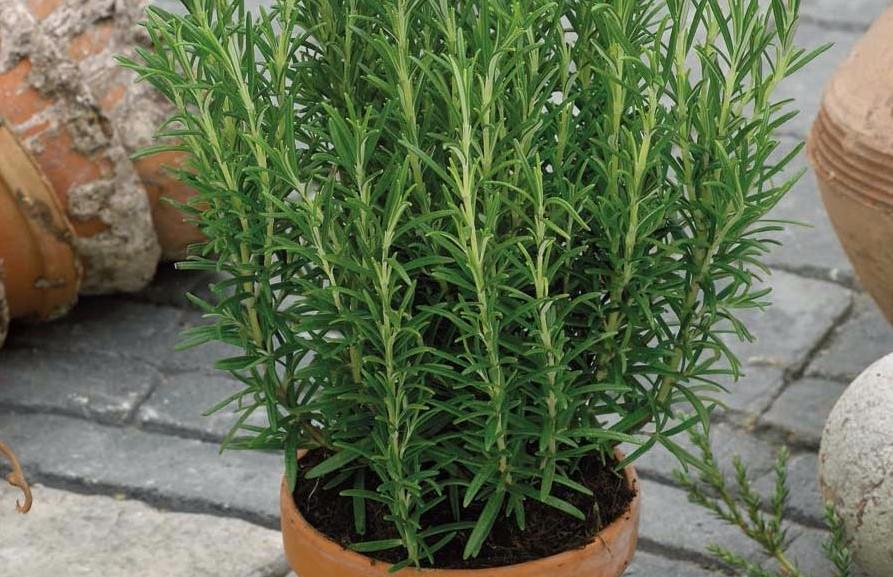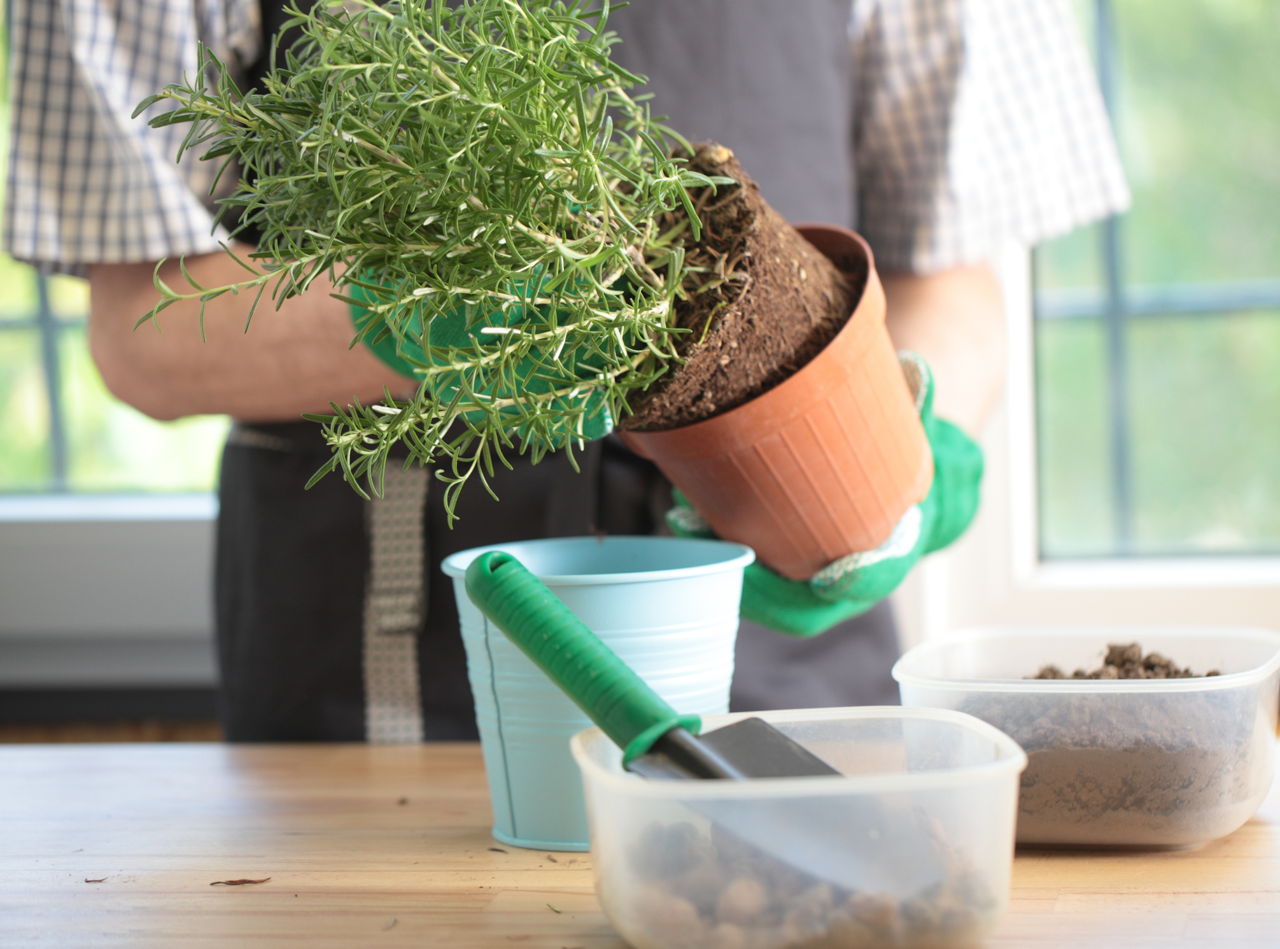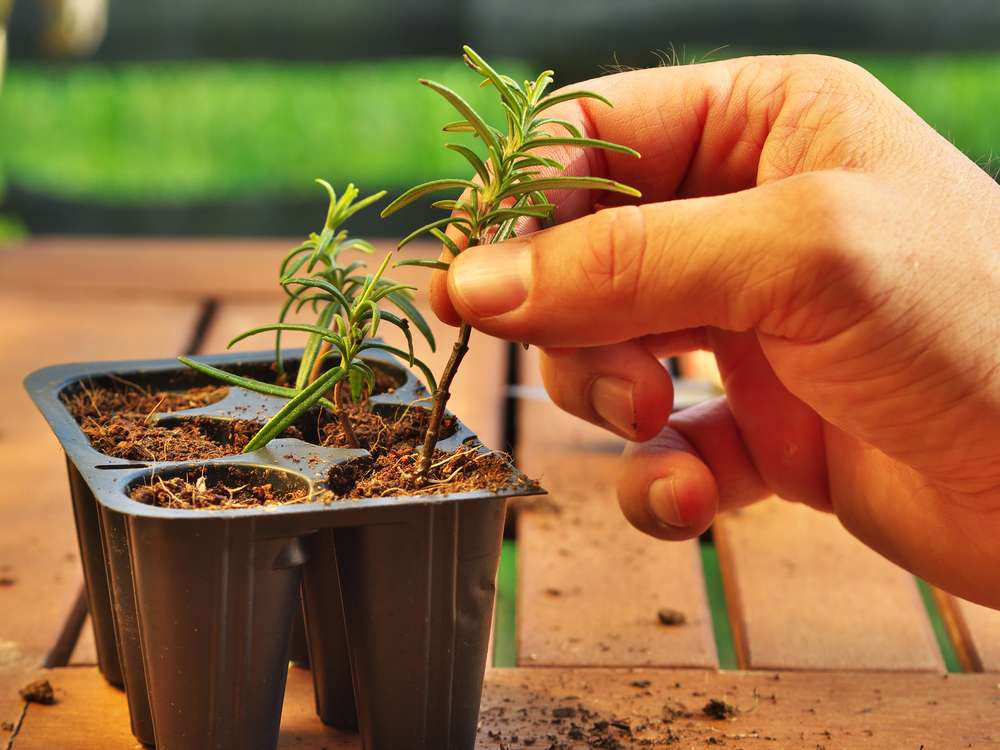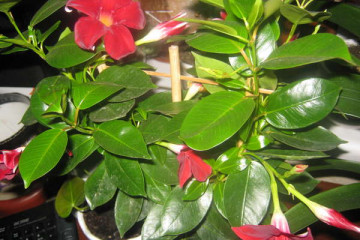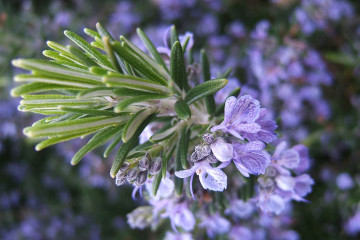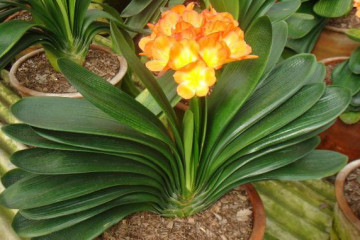Rosemary: growing and caring at home
Content:
Growing rosemary at home is not only an interesting activity, but also an unconditional benefit. In addition to the natural coniferous smell in the apartment, the plant will delight with its unusual appearance. You can make homemade seasoning from dried rosemary, because it is actively used in cooking for cooking meat and fish dishes. Also medicinal rosemary has unique properties: relieves symptoms of fatigue, helps to get rid of stress. Below in the article is everything about this wonderful plant: what is rosemary and how to grow it at home.
Variety of species
There are many types of rosemary growing in the wild, but only two are used for growing at home: common / medicinal and common. Breeders have developed a huge number of indoor rosemary varieties.
Drug
The most common type - medicinal rosemary - has straight bushes that grow in height up to 1.5-2 m with narrow leaves dense to the touch. Leaves and shoots are highly valued in various fields: cooking, traditional medicine, essential oil and cosmetics. The bushes are also used as a garden decoration, because they bloom beautifully with a scattering of small blue, purple or white inflorescences. The aroma attracts beneficial insects to the garden or vegetable garden.
Prostrate
The largest number of sprawling shrubs, similar to balls, can be found in the southern regions of the country. In length, the shoots reach only 70 cm, but they grow so much that they cover an area of about 1.5-2 m. In winter, the plant tends to change its color to green with bluish tints. Serves as a plant to create a hedge.
Popular varieties
Rosemary is a perennial plant with many different varieties. Due to the way rosemary looks, it is difficult to distinguish one species from another, but they differ in many characteristics: shape and color of leaves, maximum height, shades of flowers.
Corsican blue
The Corsican Blue shrub has a powerful root system that can penetrate 3-4 m deep into the ground. The shrub is distinguished by gray-green leaves and small, dense blue inflorescences. It blooms in late April - early May for only 20 days. The variety is considered medicinal and is planted in flower beds, along the borders in sandy or gravelly soil.
Blue winter
Ornamental shrub with blue-green needle-like leaves. It is often used to decorate flower beds, acting as a background for roses or peonies. Also great for scented mini-gardens, so it is planted next to lemon balm, chamomile and mint.
Rosemary Tenderness
A flowering ornamental plant with thin, 3-4 cm needle-leaves. In autumn, the green shrub turns gray-blue, and in April it begins to dissolve clusters of pale blue flowers. The variety is popular for garden decoration in the southern regions, but the cold winter is destructive for it. Grows well in sunny, well-ventilated areas.
Rosemary ampelous
A widespread type of shrub with twisted, hanging down, shoots. Looks good as a wall or rocky fence decoration. Twisted rosemary twigs with a scattering of bright flowers create a fabulous atmosphere. The name ampelous speaks for itself - these plants are intended for decorative decoration of premises.
Rosemary Rosinka
The most popular variety for growing at home on a windowsill. It is actively used in the preparation of various dishes, as it imparts a spicy taste. Rosemary grows well both in winter and in summer, the main thing is to keep it in a well-lit place.
Rosemary: planting and care at home
How to grow rosemary? Growing shrubs at home is required in compliance with all the rules for caring for the plant. To get a healthy plant containing nutrients, you need to organize favorable conditions.
Required temperature
The best temperature regime for growth is 20-25 ° C in the summer. In winter, the plant can safely continue growing in a cool environment of at least 15 ° C. Some varieties should be kept cool during this period by lowering the temperature to 5-10 ° C.
Air humidity
Maintaining the humidity level in the room is required to avoid drying and yellowing of the flower leaves. In summer, additional strengthening of humidity is not needed, but in winter, due to heating and a closed room, it is extremely necessary.
Moistening method: abundantly moistened expanded clay can be poured into the pan of the rosemary pot.
Lighting
Rosemary is very light-requiring, requires constant (at least 5-6 hours) and intense lighting. The medicinal plant should be placed on the southern or eastern windowsill.
It is important to constantly turn the plant to the sunlight with the other side, so the plant will not be one-sided.
In summer, the plant should be slightly shaded and protected from direct sunlight, but in winter you need maximum lighting.
Watering and fertilizing
It should be remembered: rosemary tolerates overdrying more easily than over-watering. But even so, watering should be done regularly. You need to feed the plant during its growing season: from spring to November every month. A complex fertilizer for plants should be applied.
Plant pruning
As it grows, the shoots should be systematically cut off, forming a further form of the bush. Cutting the shrub is very important, because it motivates the plant to grow further, in the future it will affect the number of new shoots and the beauty of the rosemary.
Shrub transplant rules
An annual shrub requires an annual transplant into a new pot; it is worth doing this in the spring, closer to mid-April. Adult rosemary should be replanted every three years, but the very first layer of soil should be replaced annually.
A home plant is transplanted by the transshipment method:
- The entire lump of earth, together with the grown bush, is taken out of the flowerpot.
- The lump is carefully placed in a new vessel.
- Free space is covered with new earth, everything is crushed and watered.
Rosemary breeding methods
Planting rosemary, as well as growing it, is not difficult. There are various ways to propagate the shrub.
- With the help of seeds. This method requires careful preparation of planting material and soil.Rosemary seeds need to be processed in order to ultimately increase germination. Saplings need constant care and a special microclimate. After they grow up, they should be sent outside.
- Cuttings. It is necessary to cut off the top of an adult plant, then root it in a previously prepared substrate. Having provided a number of conditions, the cuttings form roots, after which they can be planted.
- Twigs. The cut branches of the plant are placed in water and the roots are awaited. After the seedlings are left in a pot or taken out into the street.
- By division. The method used when transplanting rosemary - the roots are divided into several parts and planted in different pots.
- Layers. One of the branches of the plant is bent down, without tearing it off the bush, and sprinkled with earth. After a while, it has its own roots, after which the layers can be separated from the mother bush.
Rosemary herb benefits and uses
Before planting rosemary, you should familiarize yourself with its properties. The plant contains an amazing set of useful vitamins and substances, like thyme, which, by the way, can also be grown at home. A perennial shrub is a godsend for traditional medicine, cooking, and the creation of essential oils.
Rosemary essential oil is used for:
- relieving headaches, fatigue and stress;
- helps in relieving symptoms of flu and other colds;
- as a foot bath after a hard working day - relieving puffiness and pain;
- as an additive to shampoo - strengthens hair and promotes hair growth;
- to combat any kind of skin irritation, you just need to mix the cream with essential oil.
In cooking, rosemary is widely used in cooking, and also serves as a component for brewing herbal teas.
Growing a healthy perennial plant for a variety of purposes at home is a good choice. In addition to its vitamin base, the shrub will serve as an excellent decorative element and will give a wonderful forest scent. The shrub is not very demanding, but you need to take care of it correctly: ensure regular watering and good lighting.

